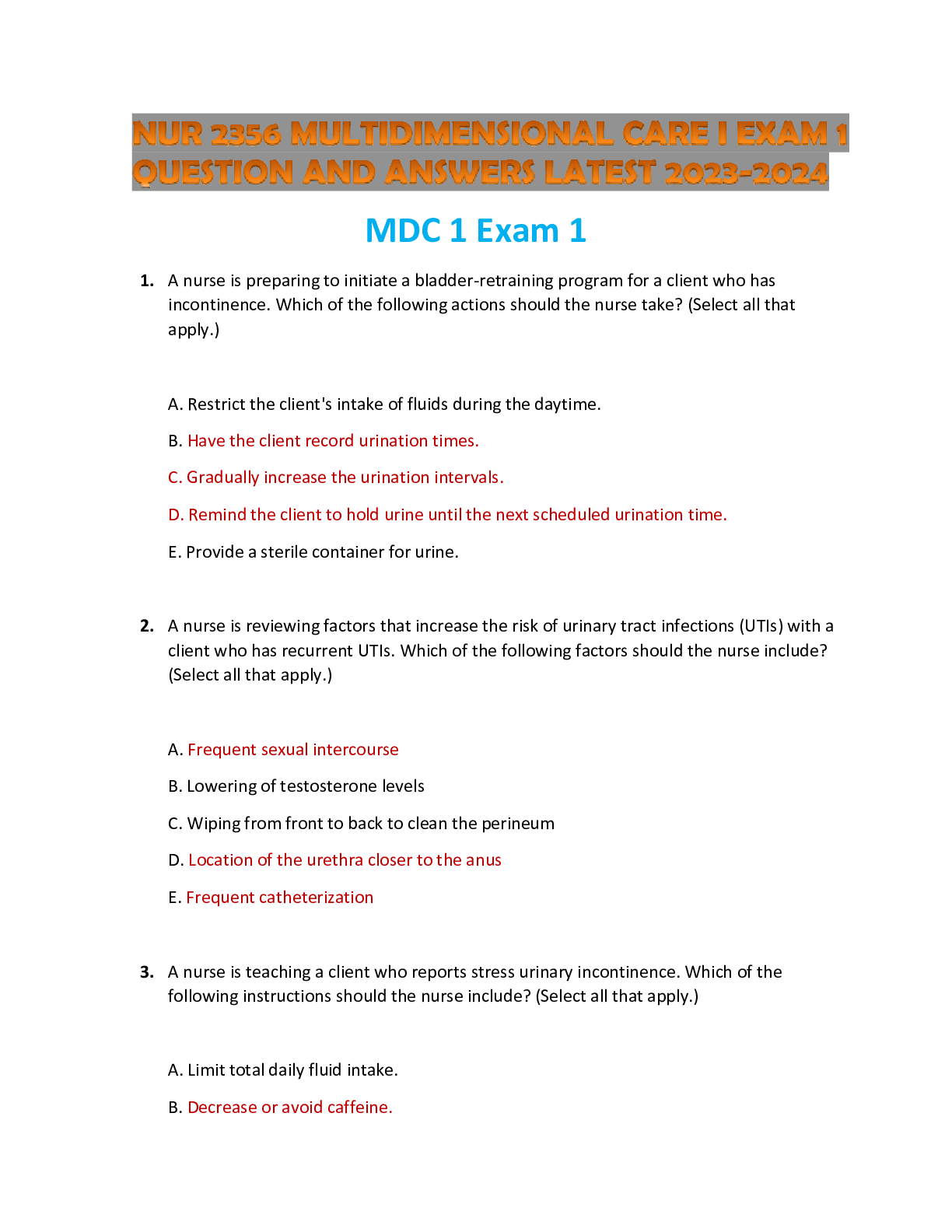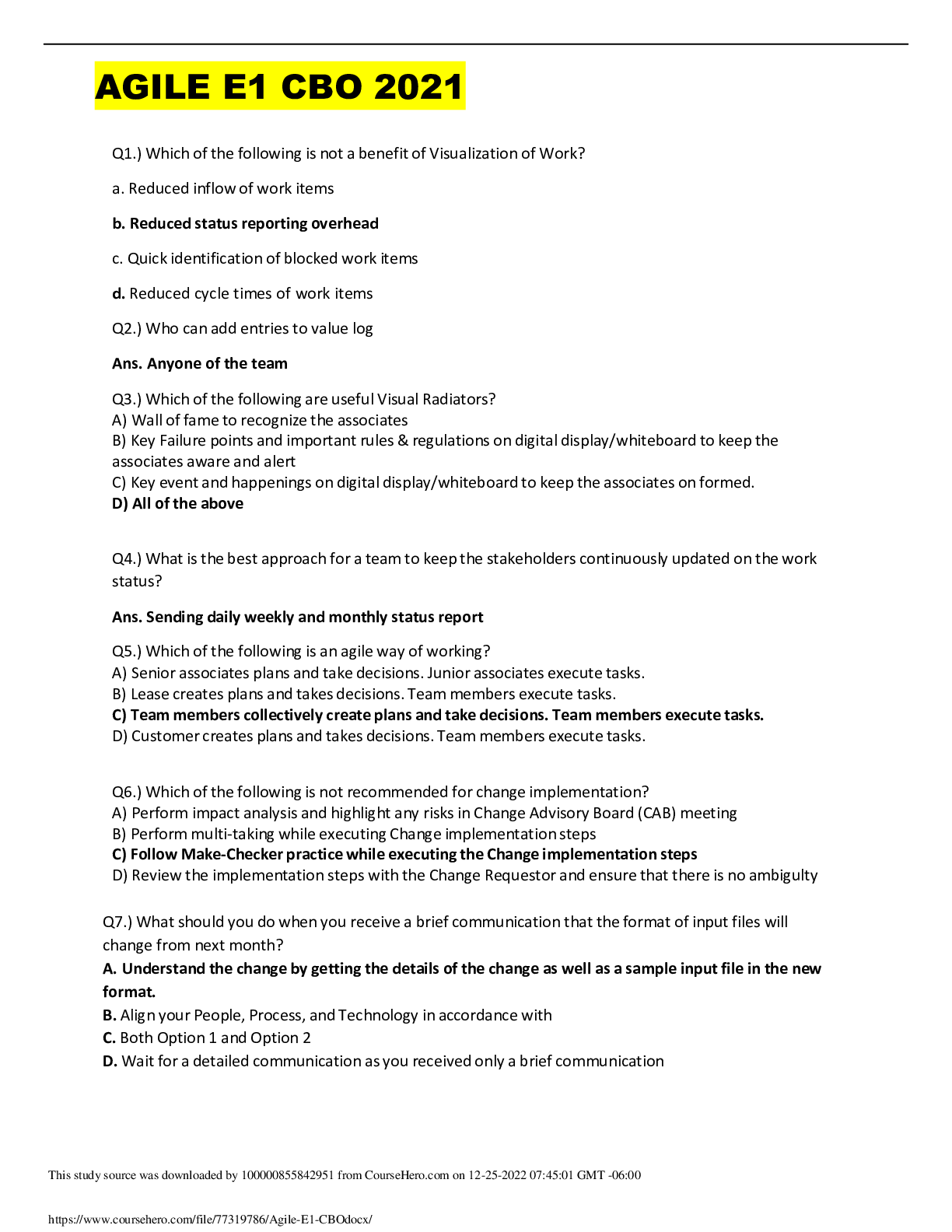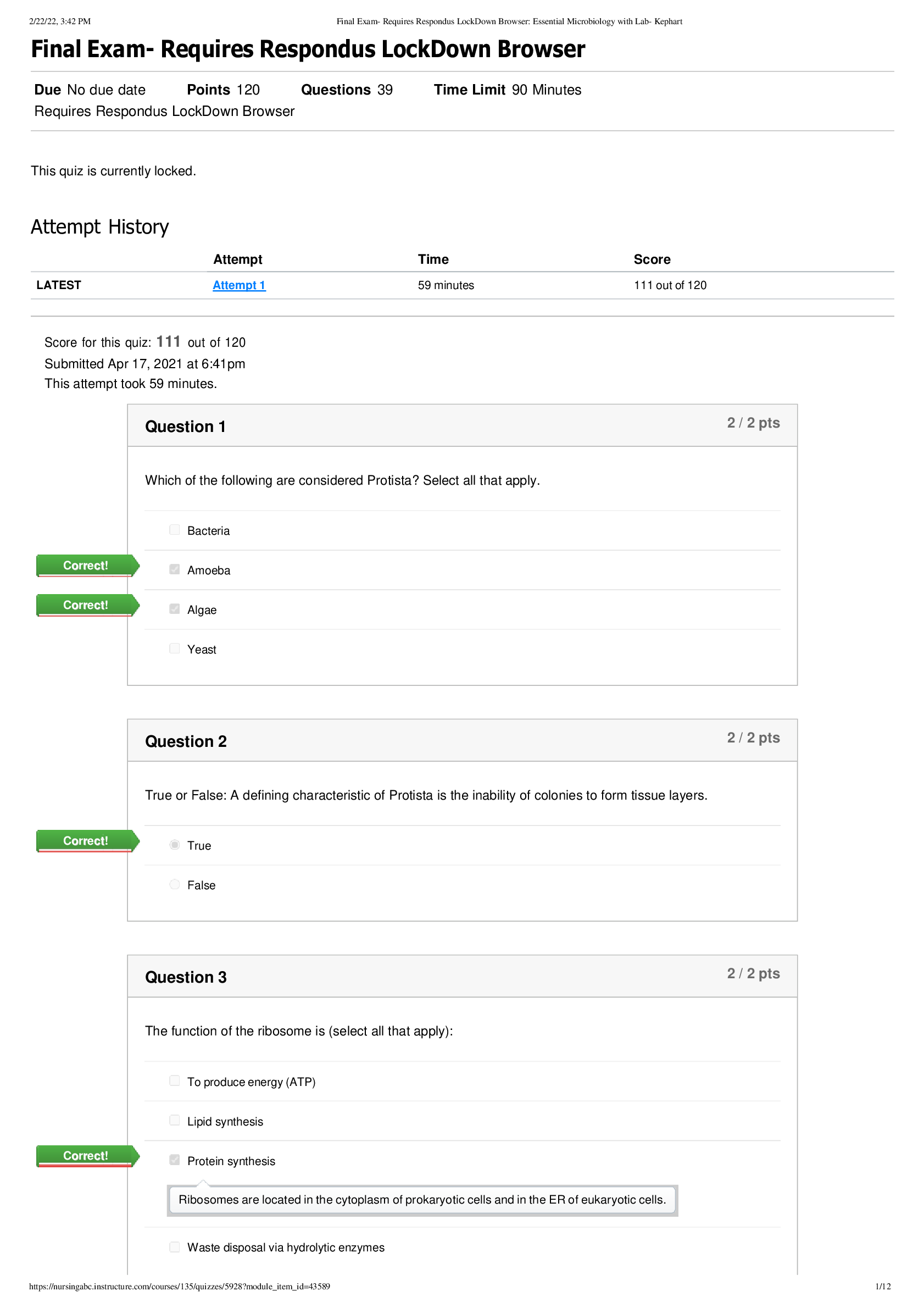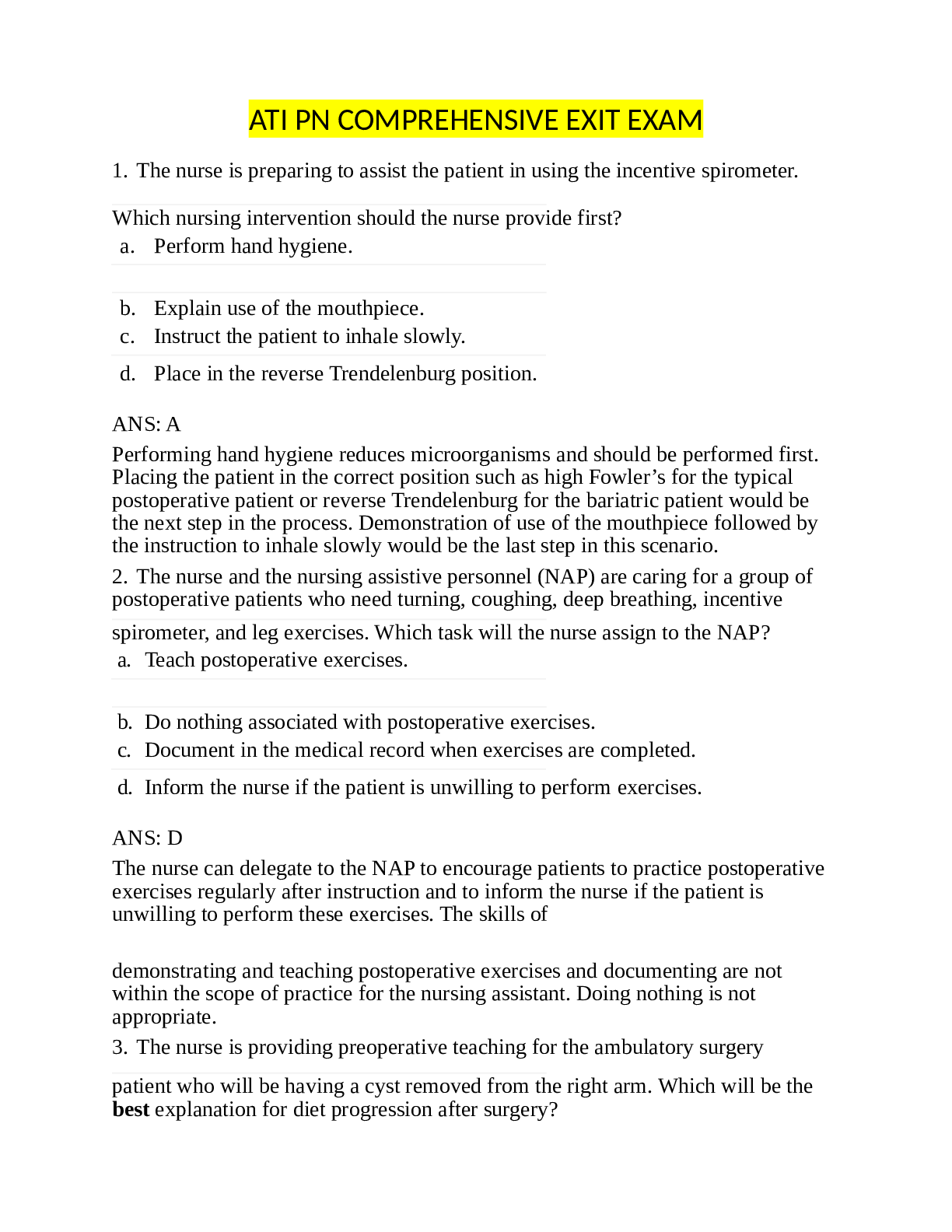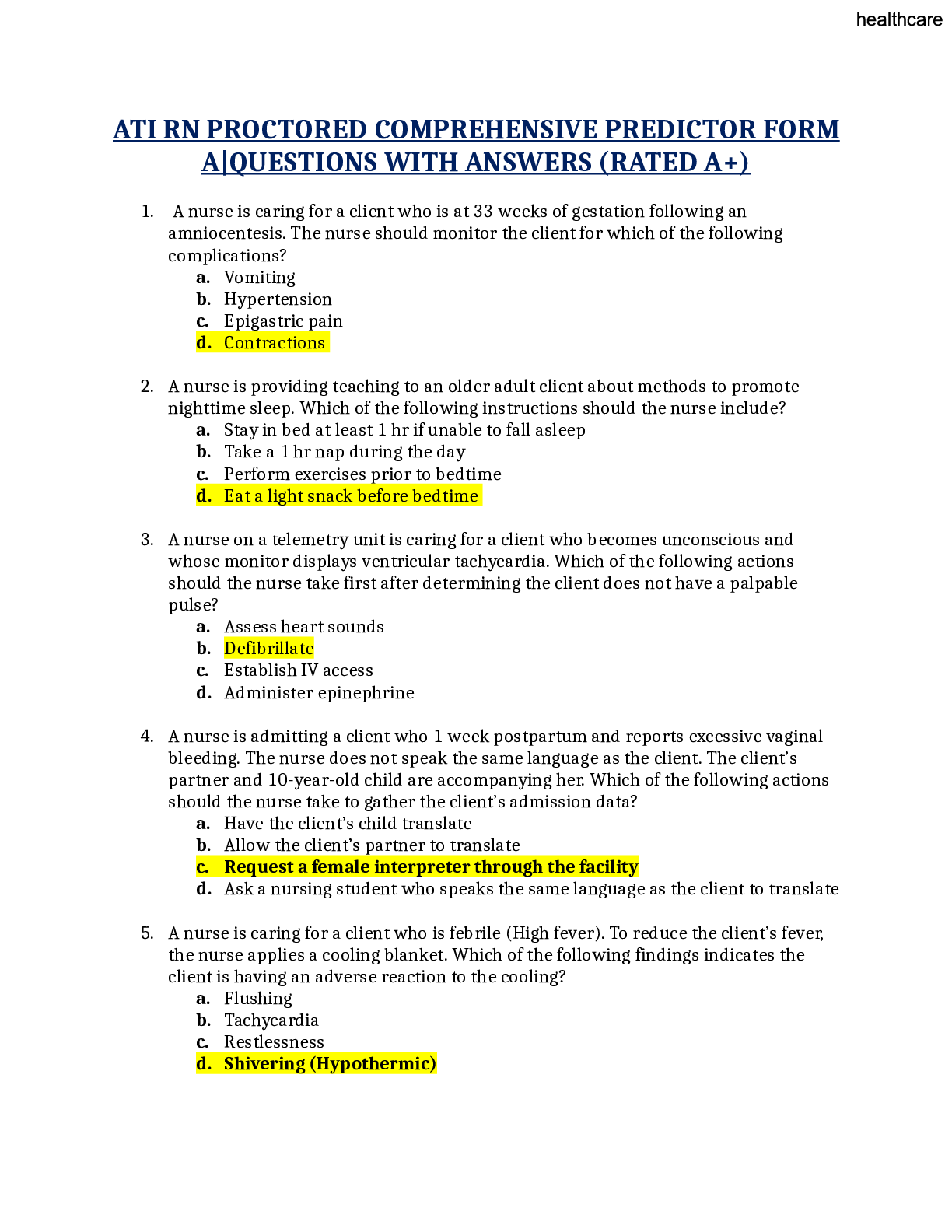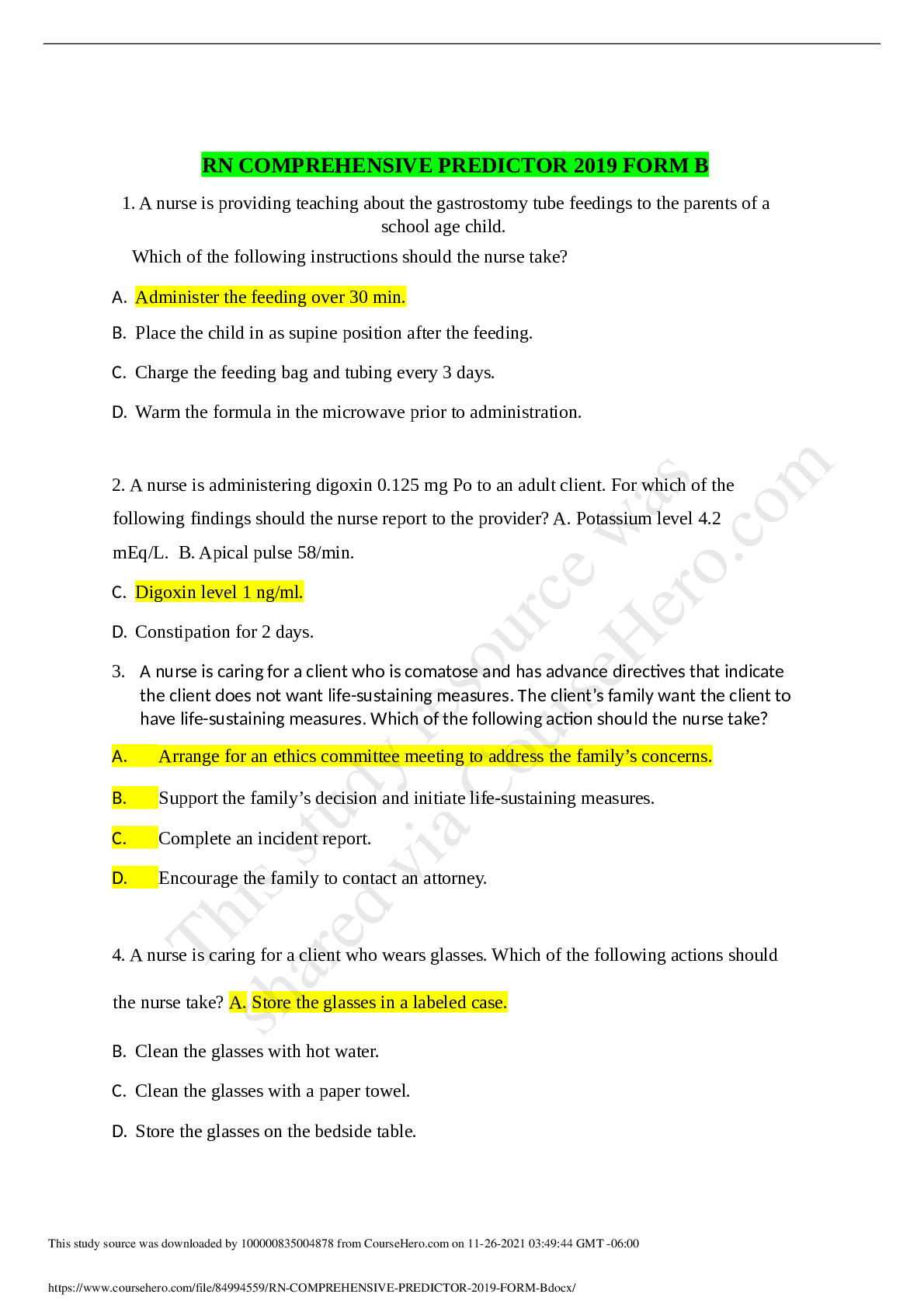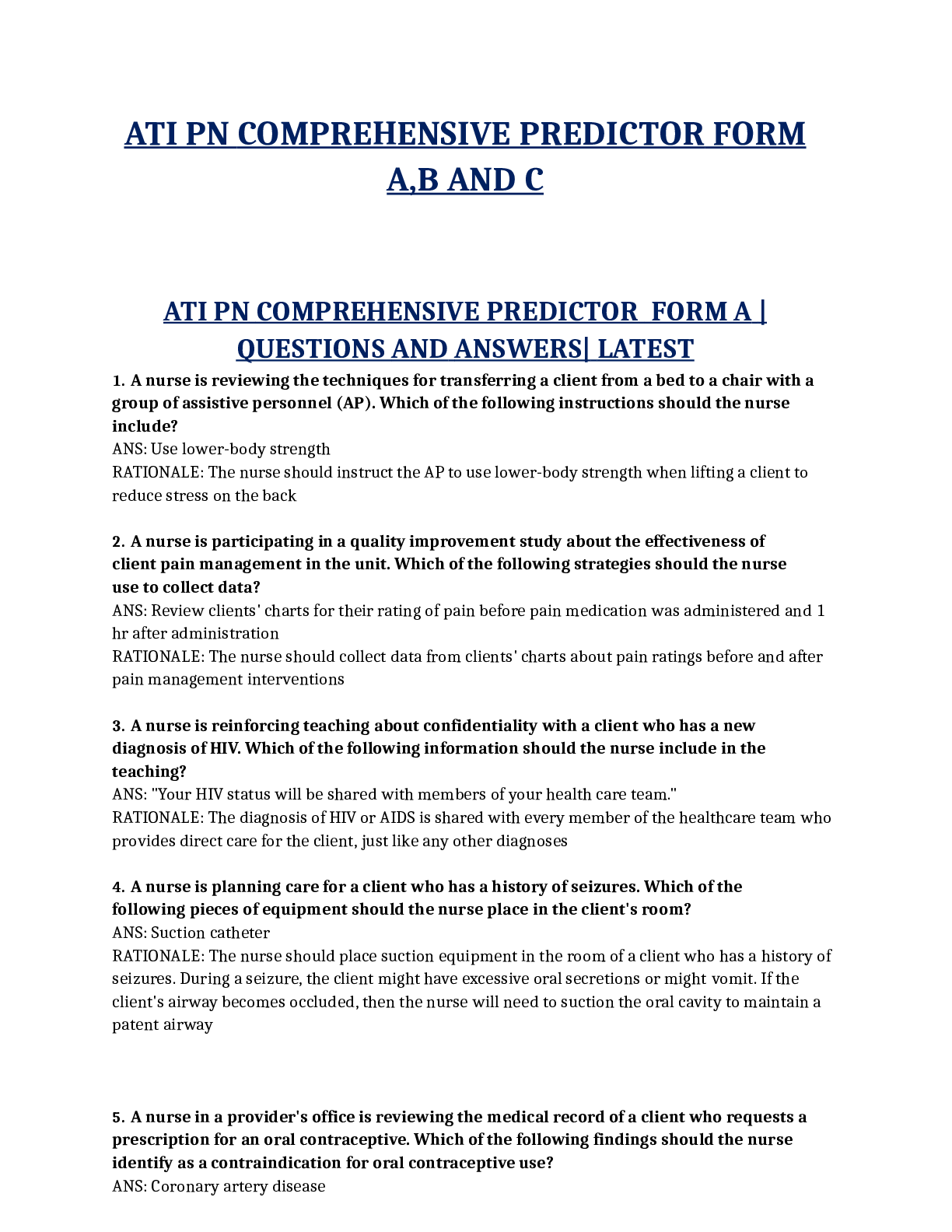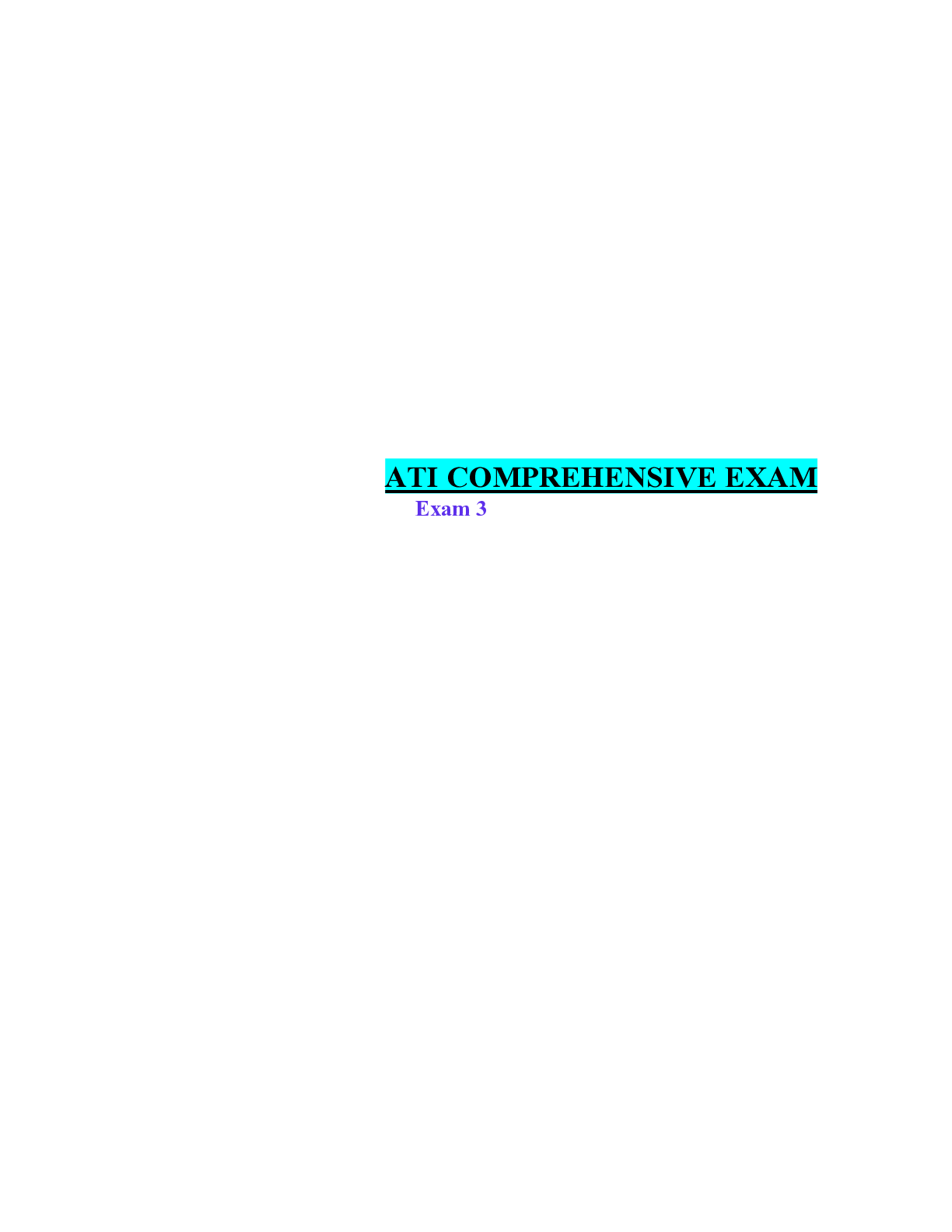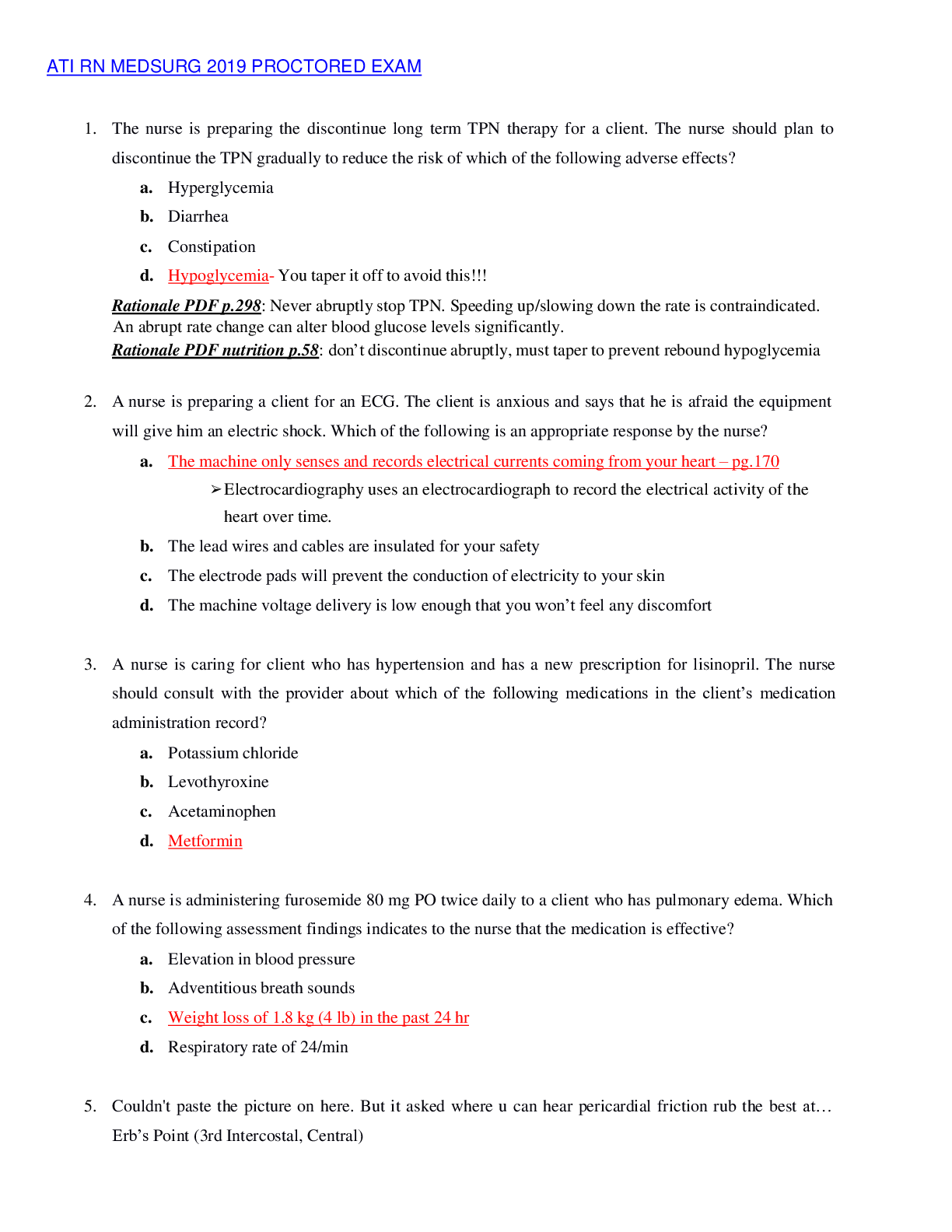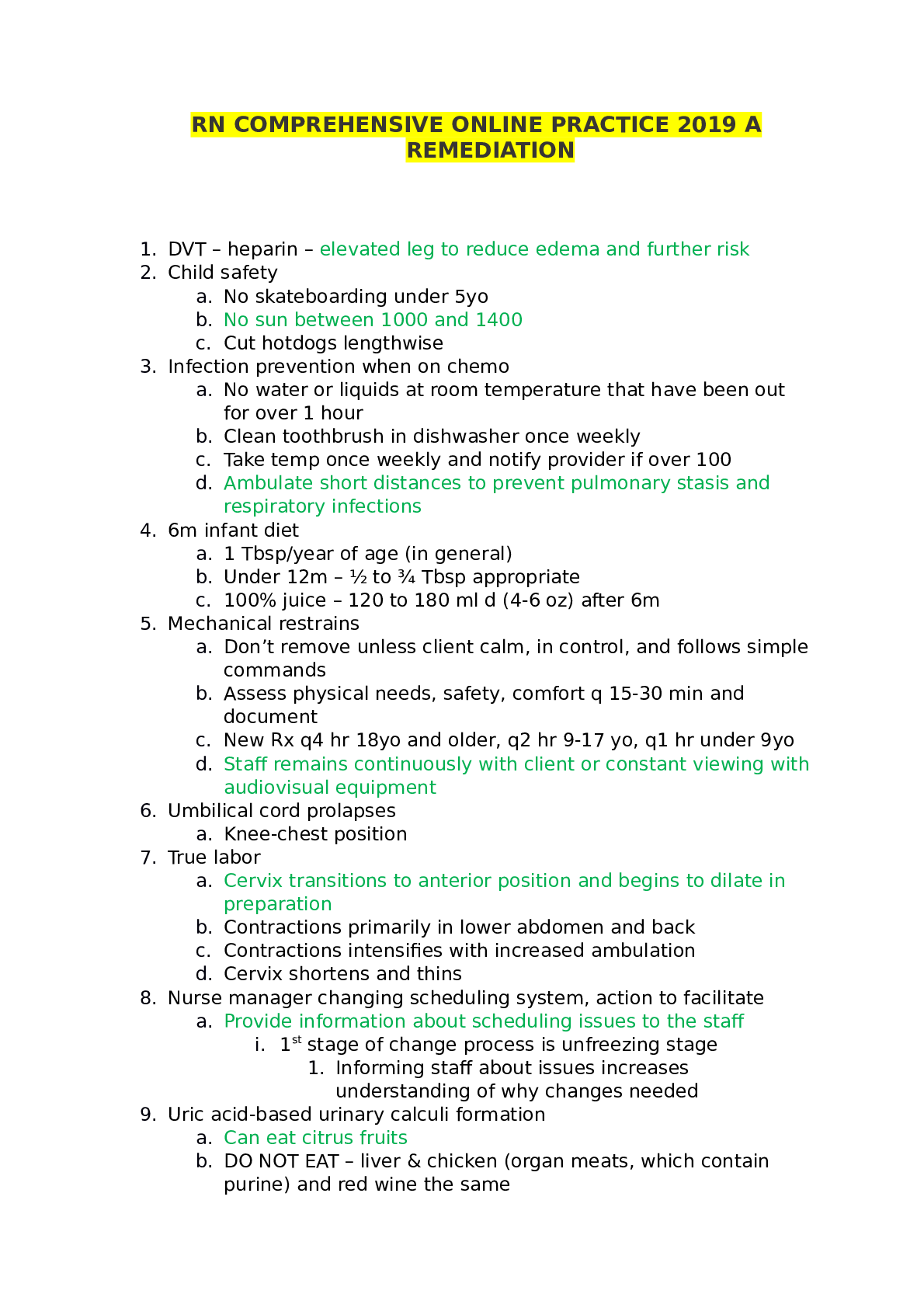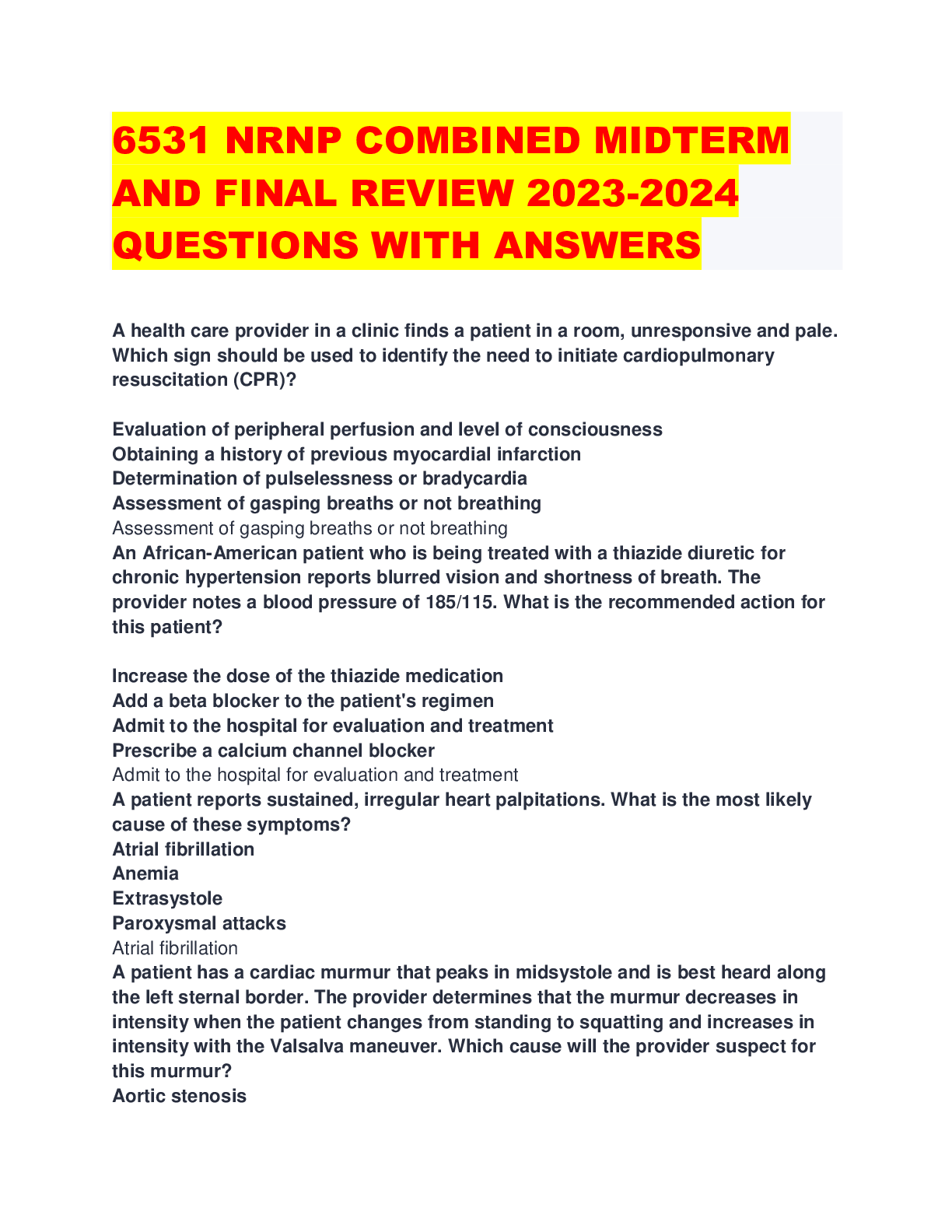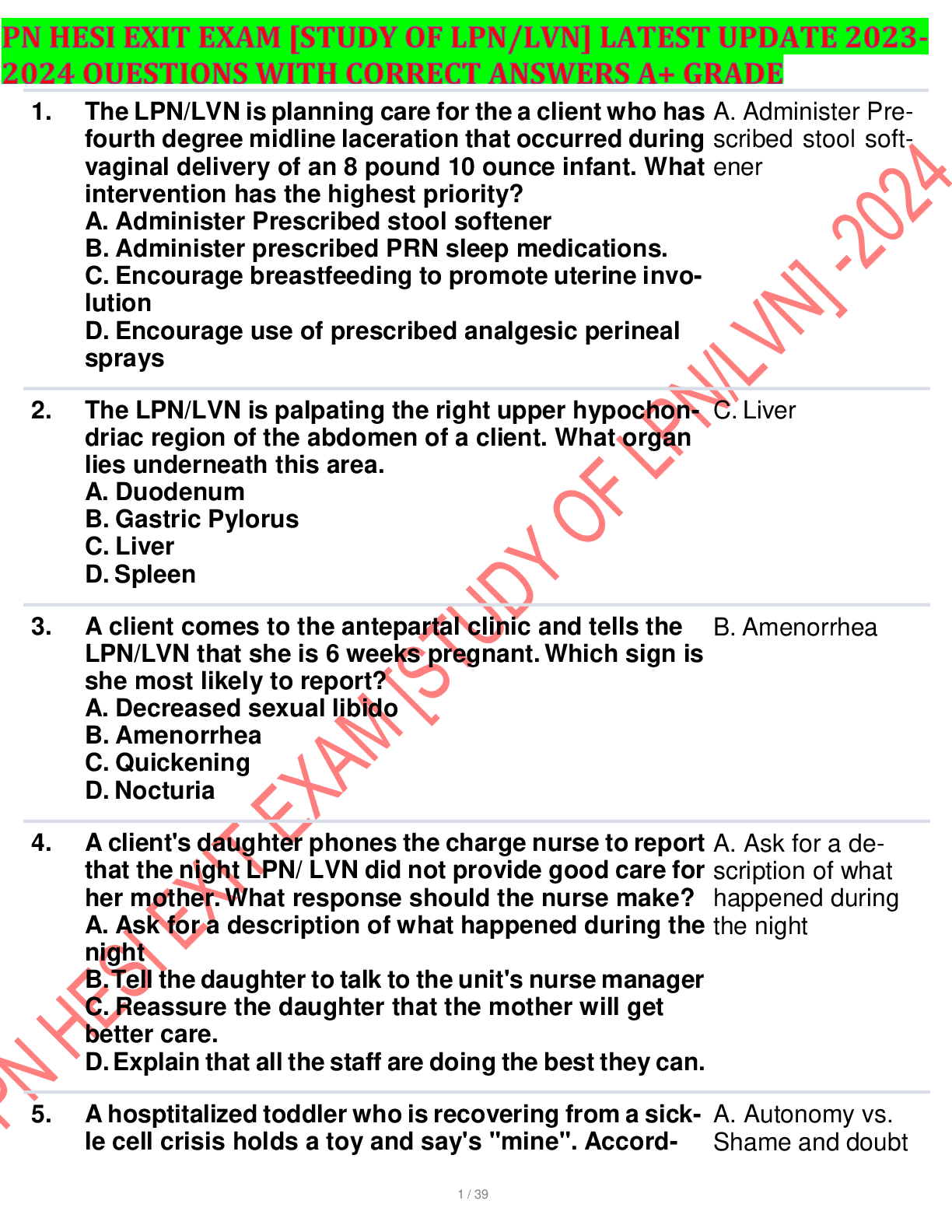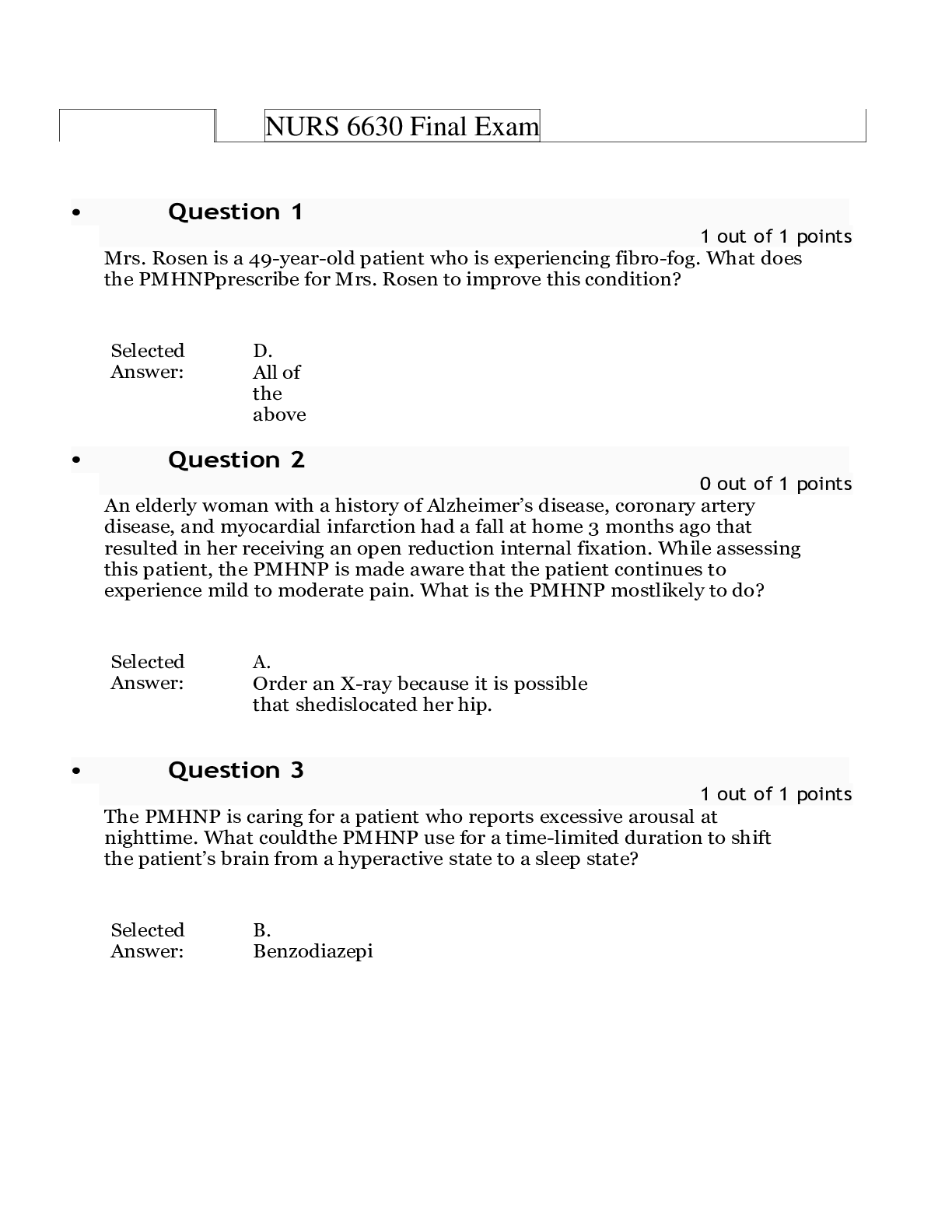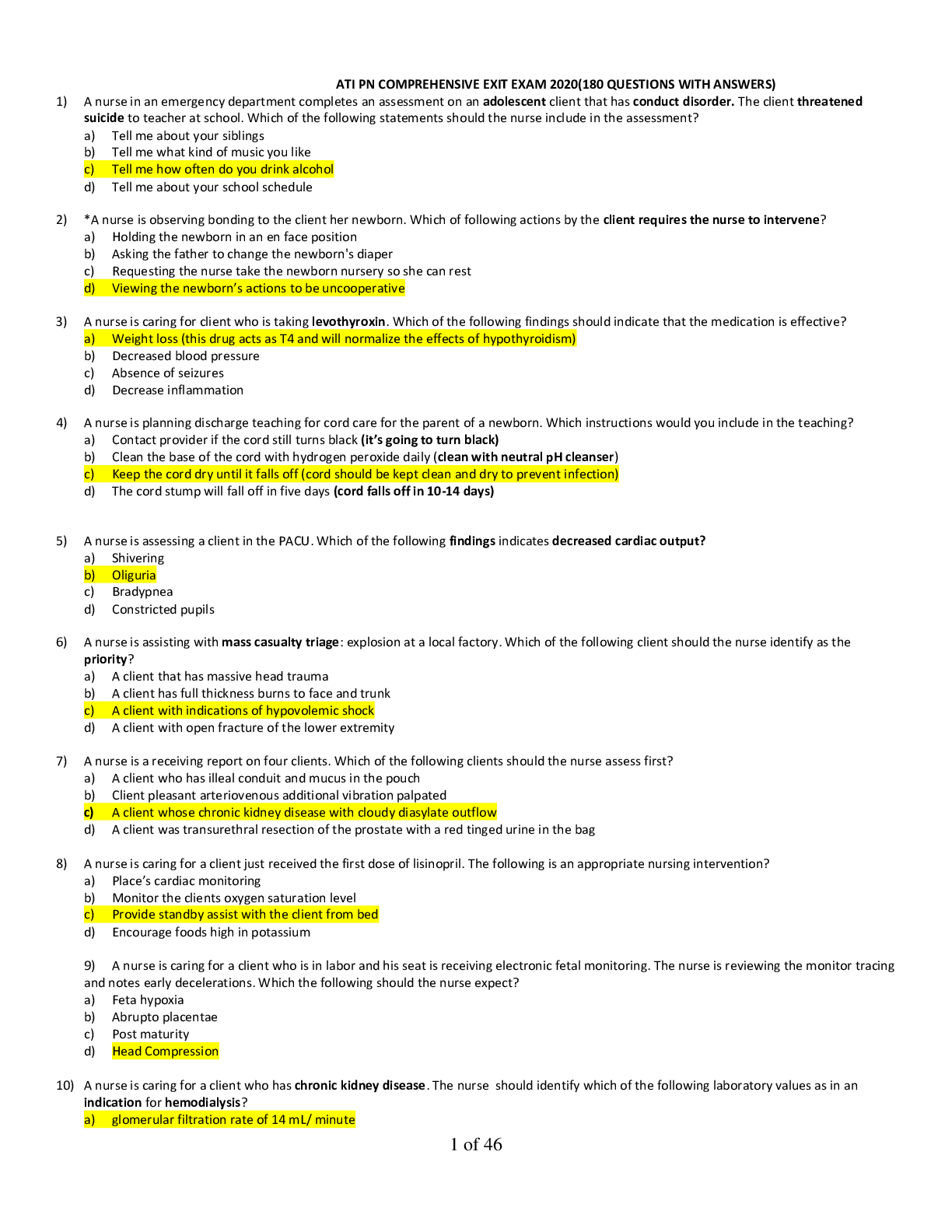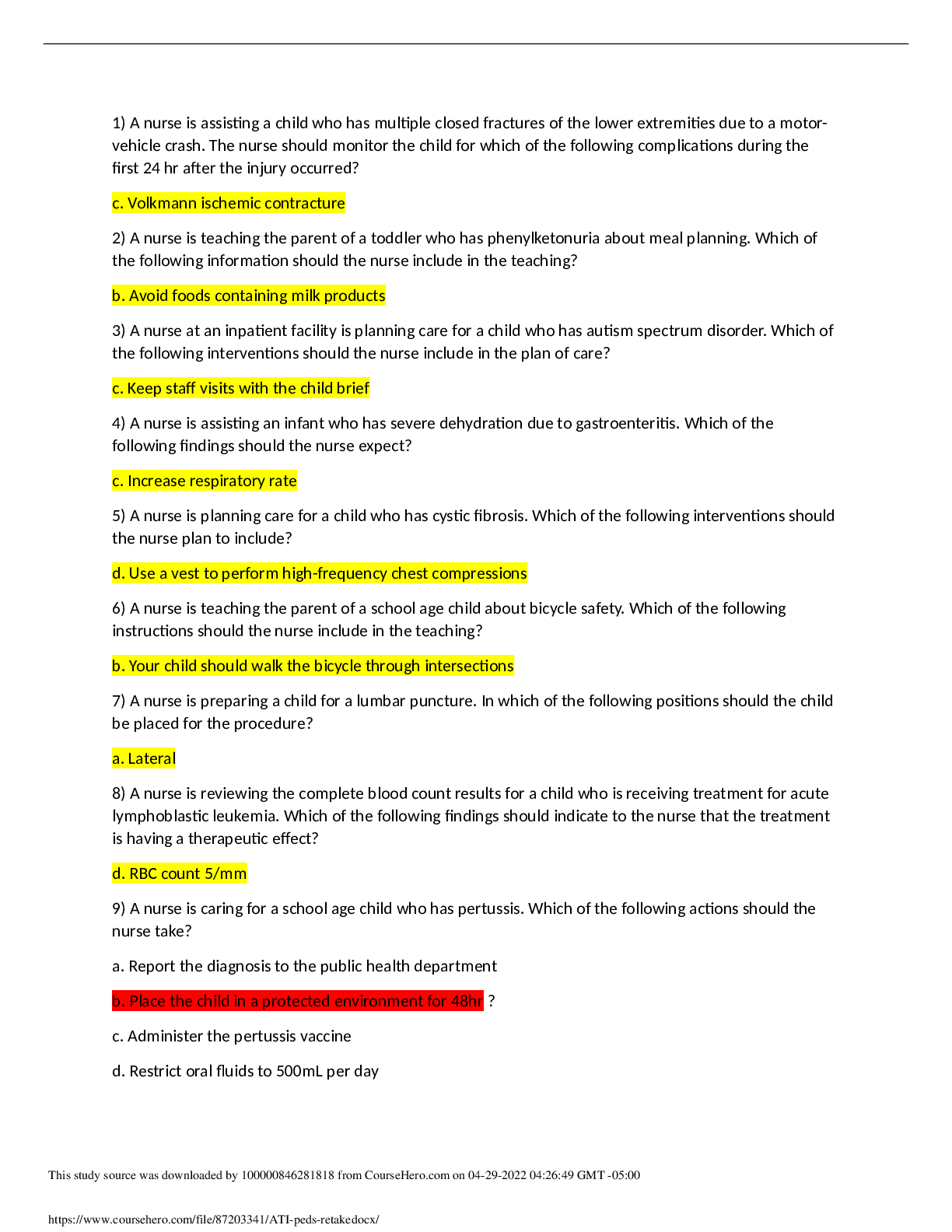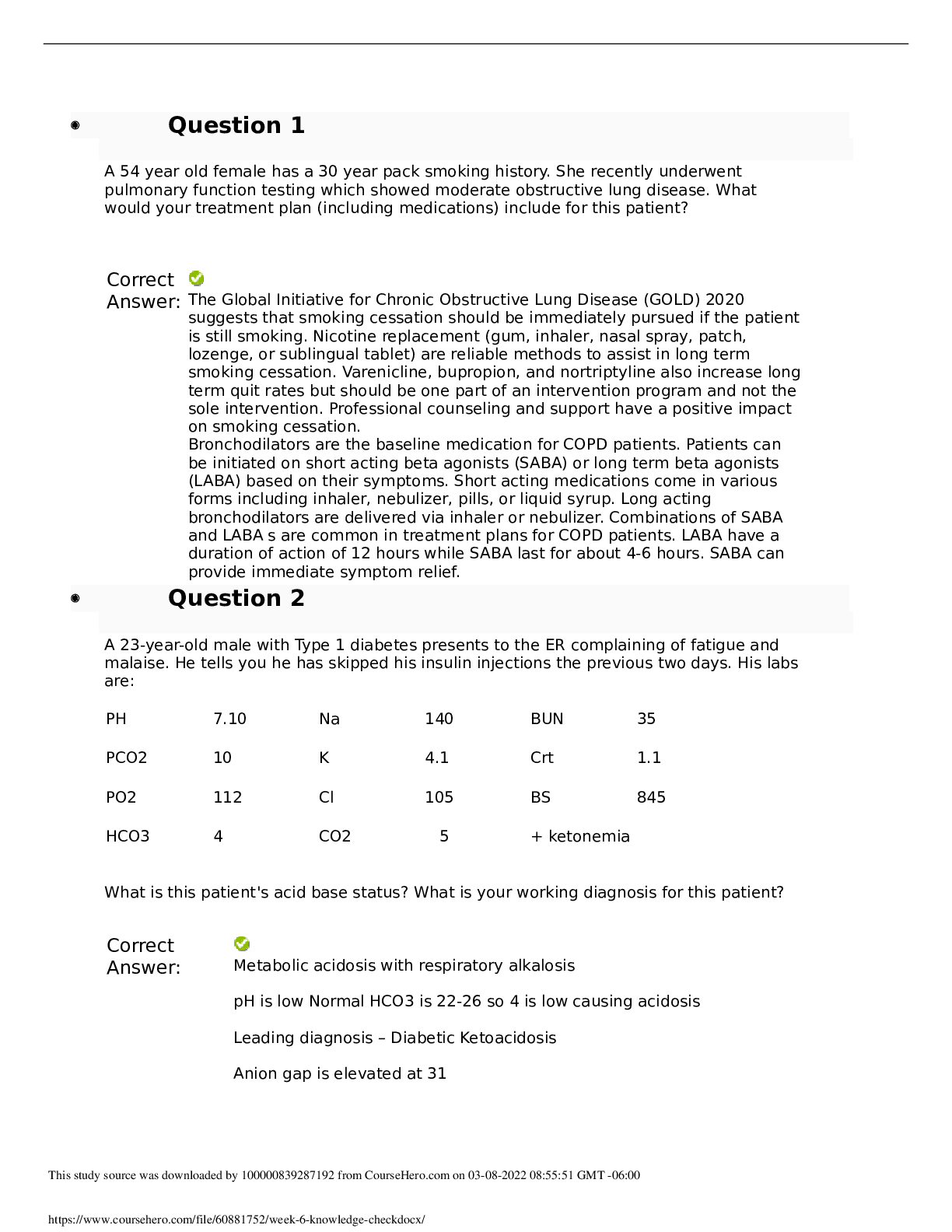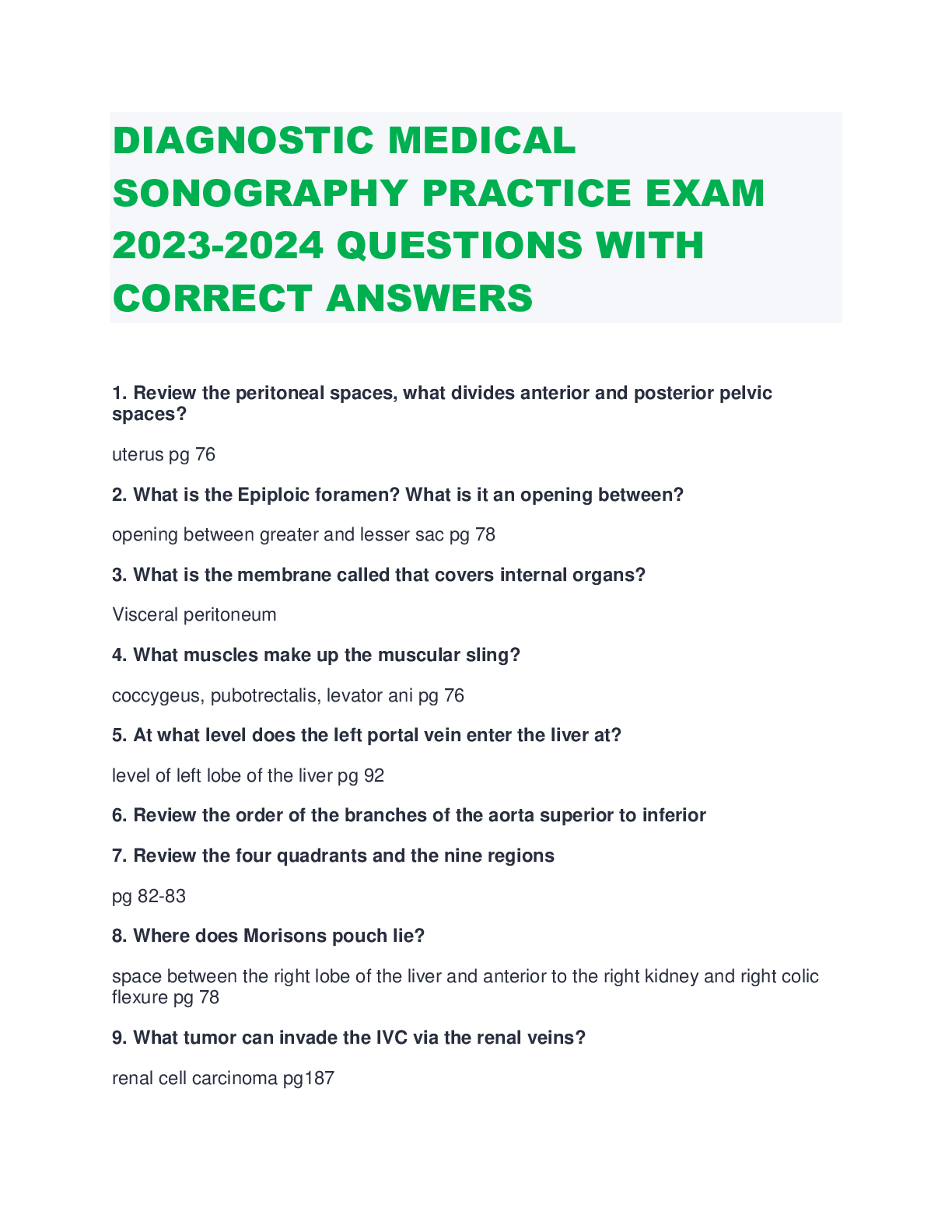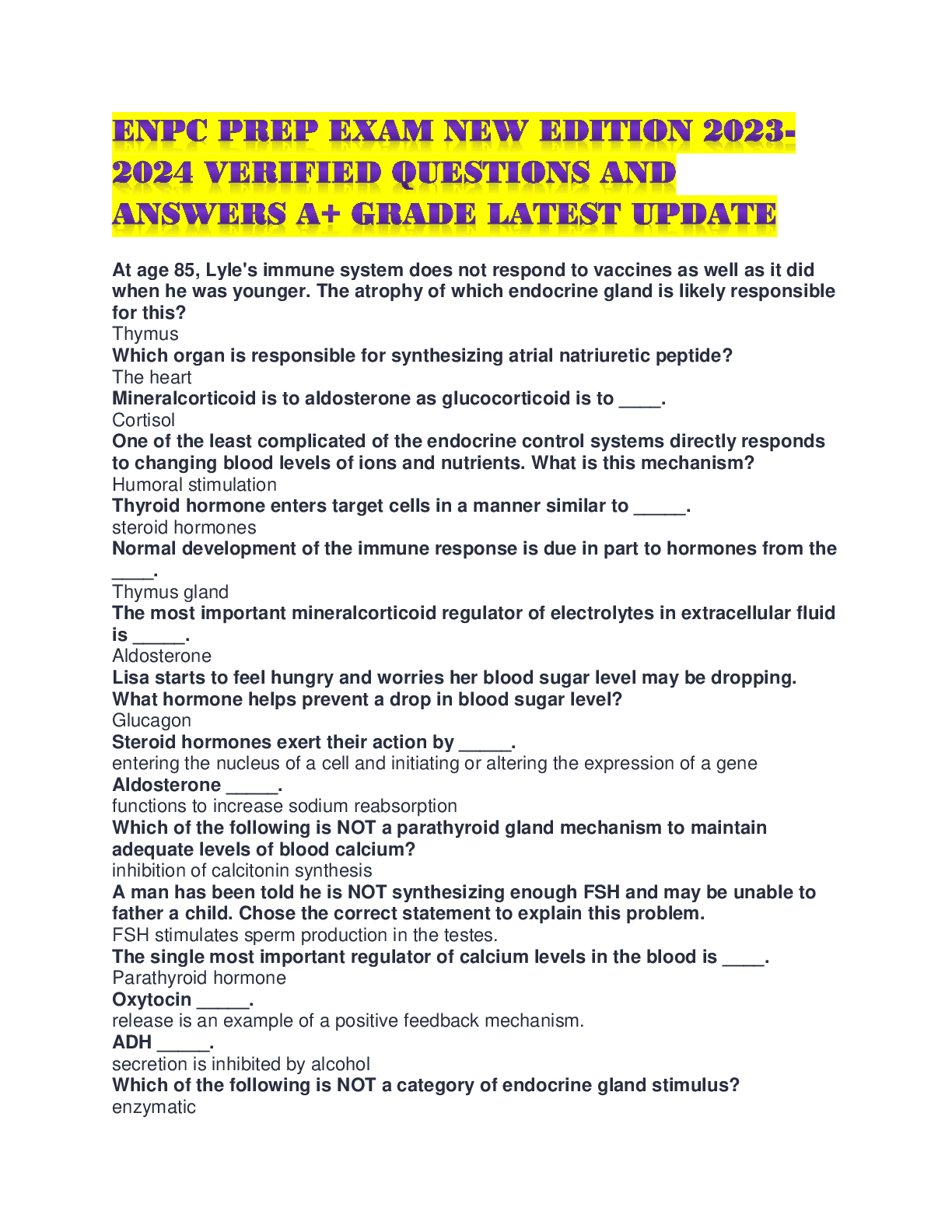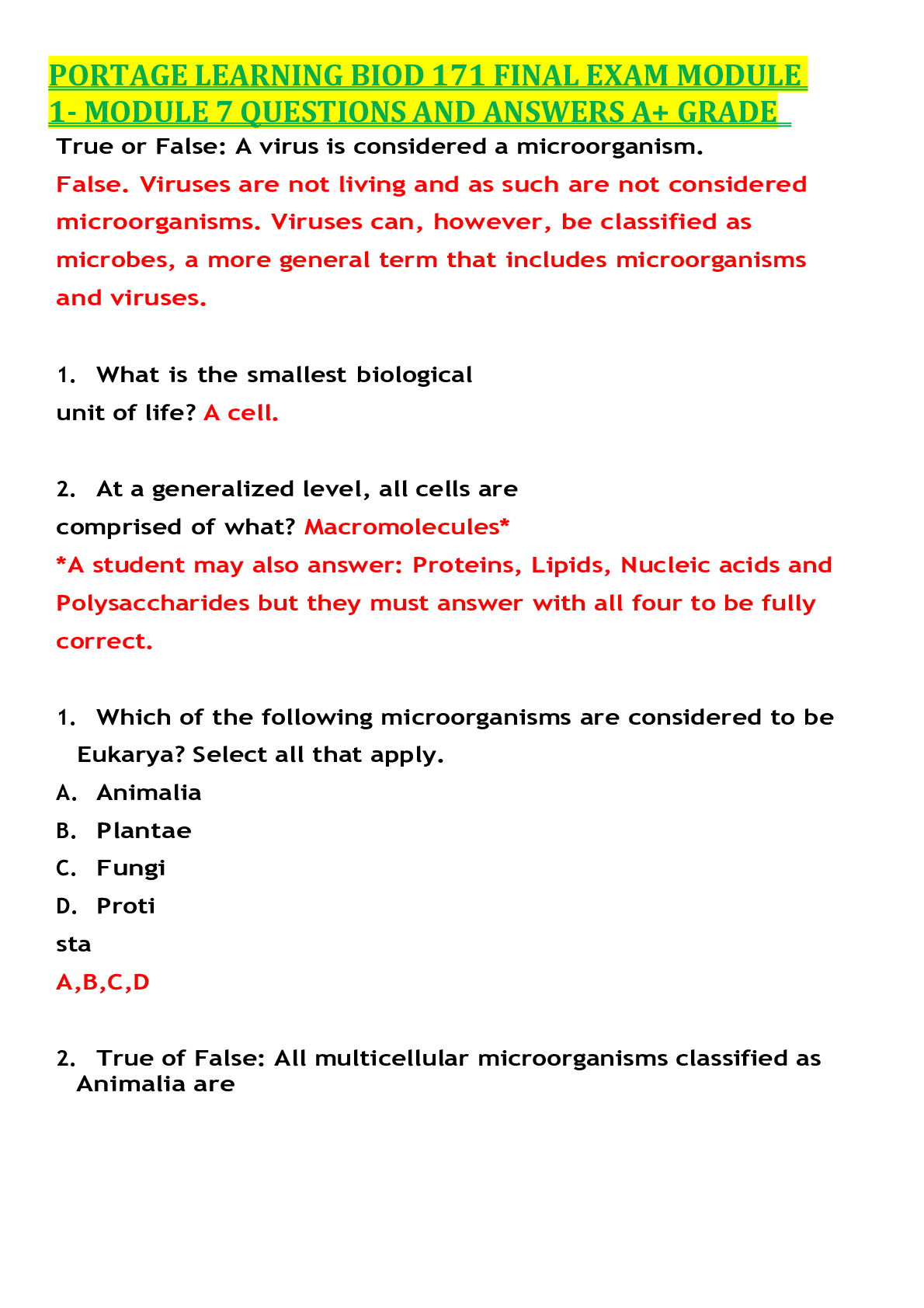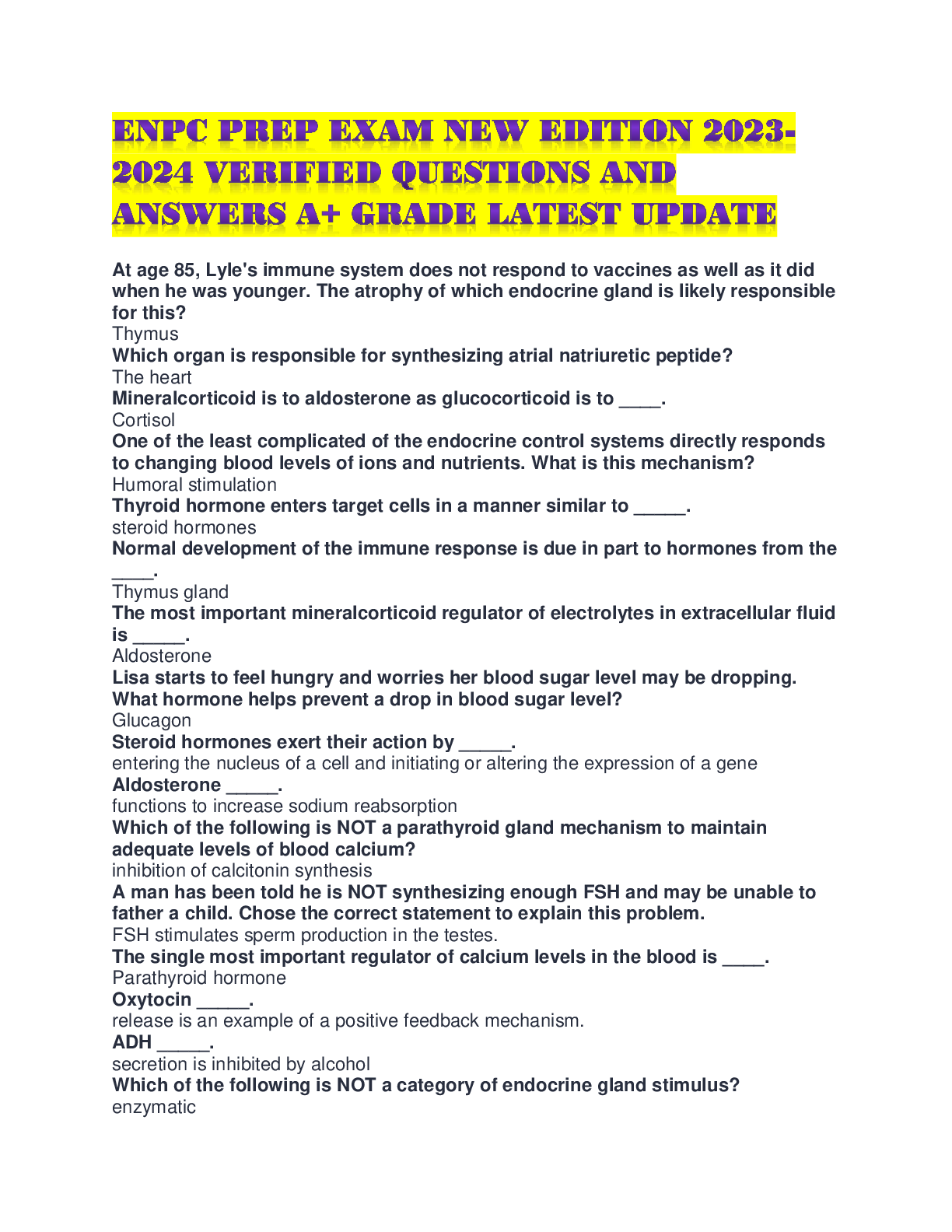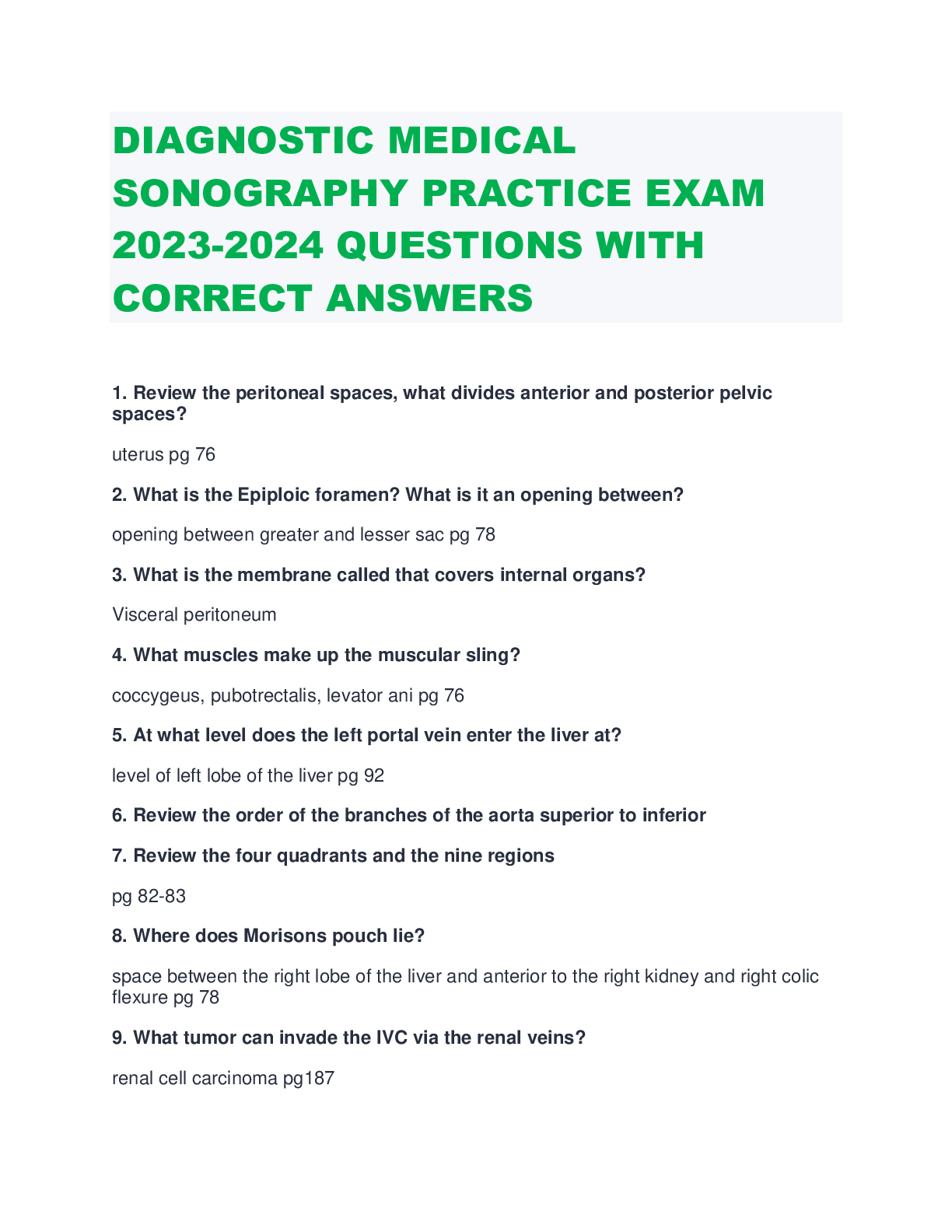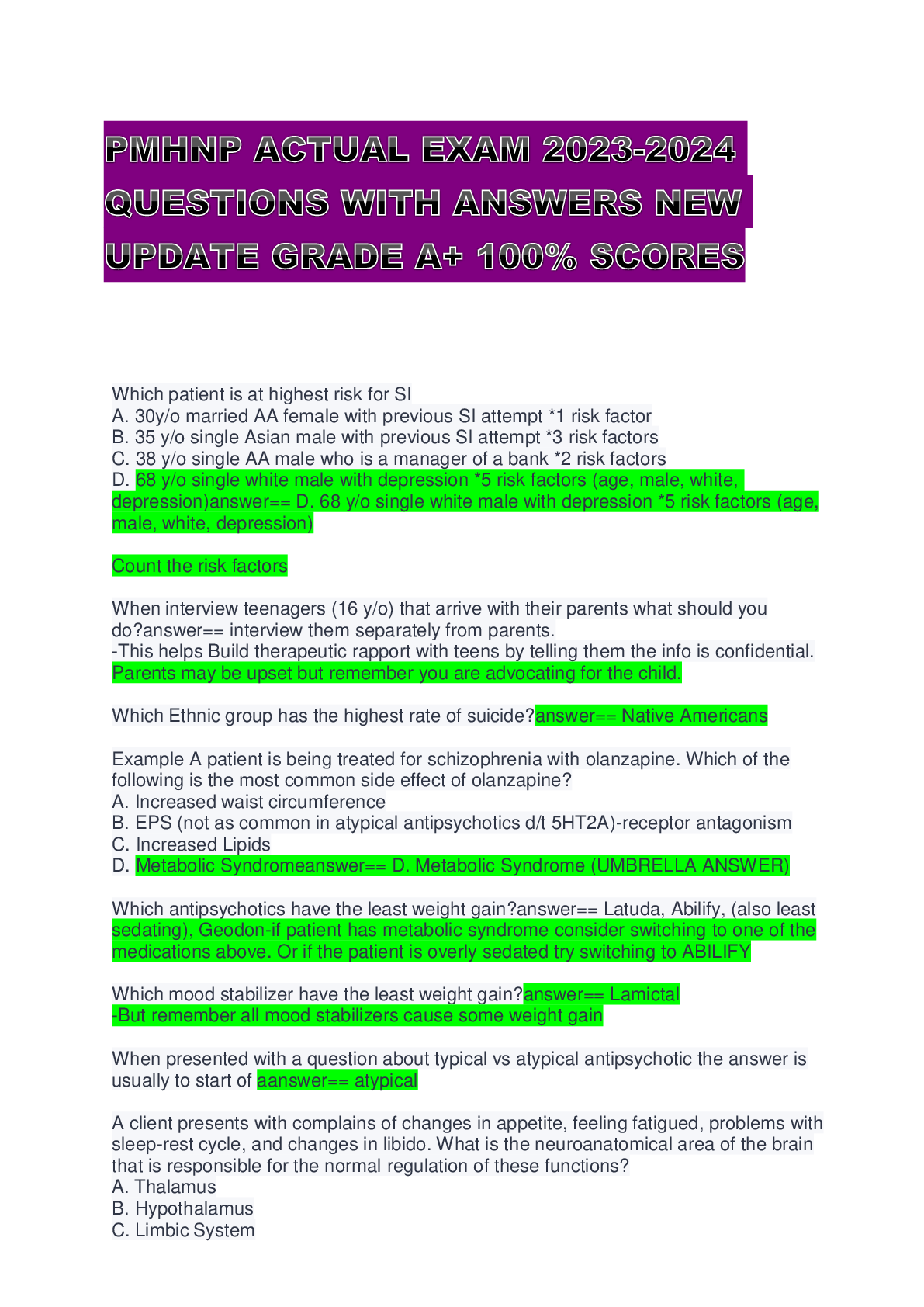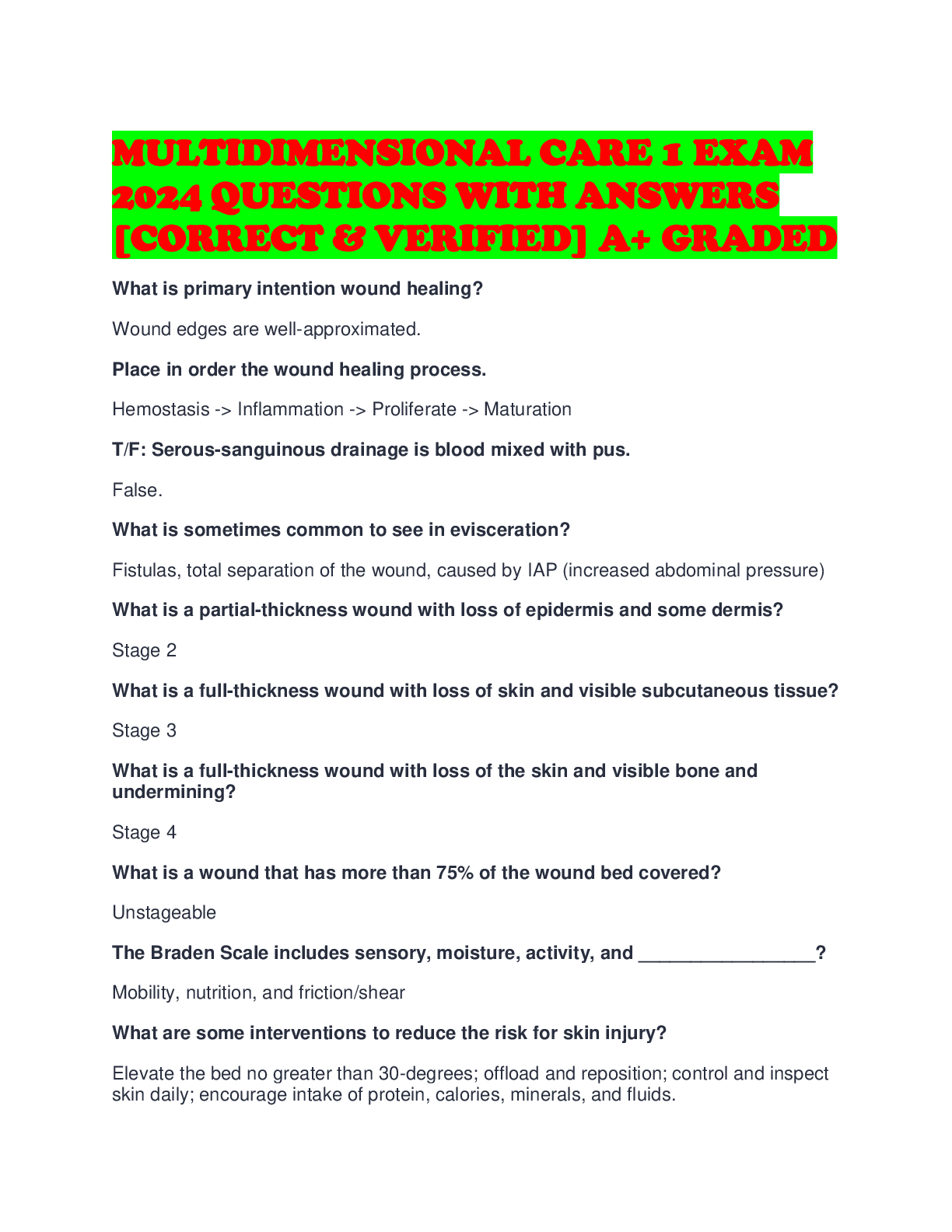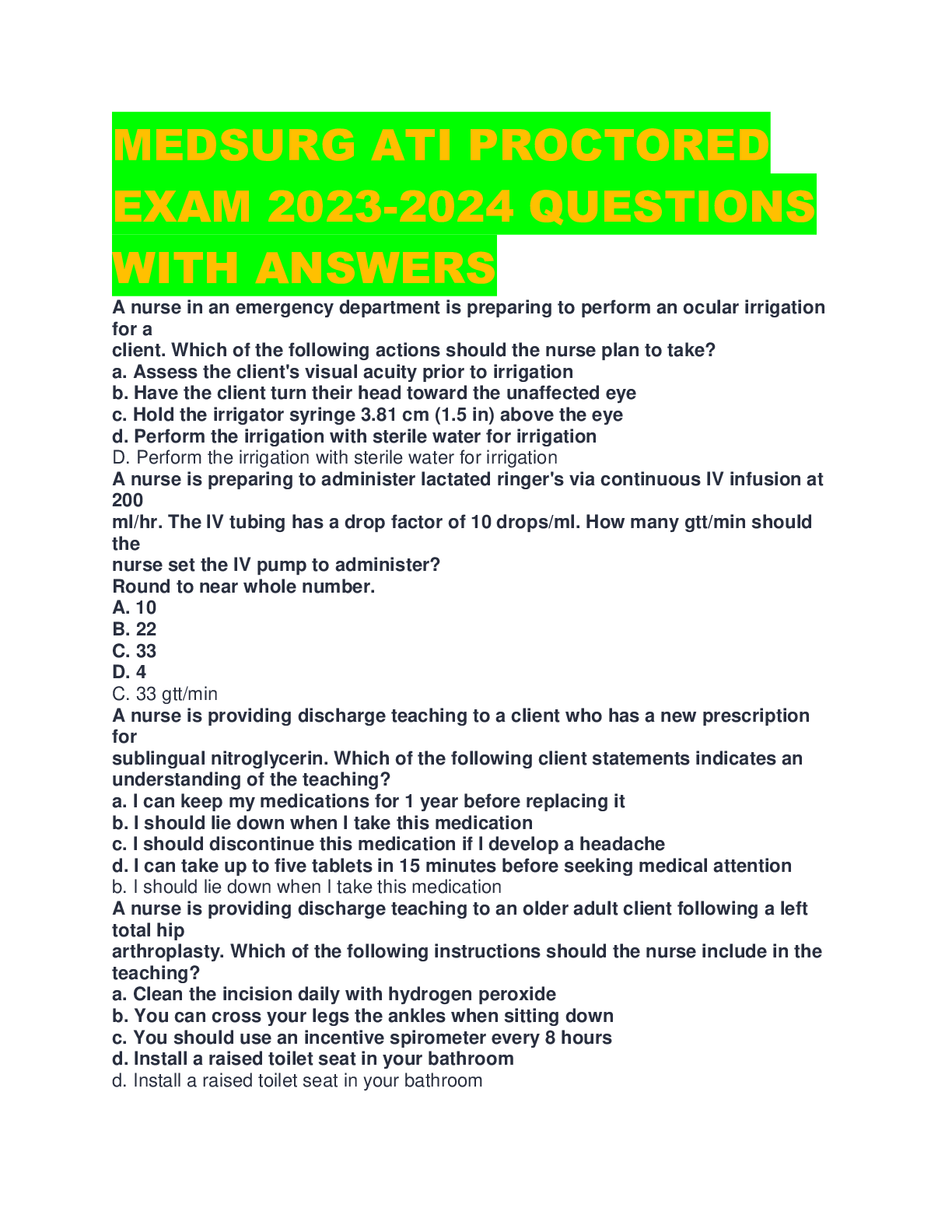Hesi Pediatrics Peds > EXAM > HESI RN PEDIATRICS 2019 REVIEW 2024 QUESTIONS WITH ANSWERS A+ GRADE (All)
HESI RN PEDIATRICS 2019 REVIEW 2024 QUESTIONS WITH ANSWERS A+ GRADE
Document Content and Description Below
HESI RN PEDIATRICS 2019 REVIEW 2024 QUESTIONS WITH ANSWERS A+ GRADE A nurse is caring for a preschool-age child who is dying. Which of the following findings is an age-appropriate reaction to death b... y the child? (Select all that apply.) a. The child views death as similar to sleep. b. The child is interested in what happens to his body after death. c. The child recognizes that death is permanent. d. The child believes his thoughts can cause death. e. The child thinks death is a punishment. a. The child views death as similar to sleep. b. The child is interested in what happens to his body after death. e. The child thinks death is a punishment. a nurse in the emergency department is caring for a 2 year old who was found by his parents crying and holding a container of toilet bowl cleaner. The child's lips are edematous and inflamed, and he is drooling. wotf is the priority action by the nurse? check the respiratory status A nurse is teaching a parent of a 12 month old child about development during the toddler years. wotf statements should the nurse include Your child should be able to scribble spontaneously using a crayon at the age of 15 months." A nurse is caring for a toddler and is preparing to administer 0.9% sodium chloride 100 mL IV to infuse over 4 hr. The drop factor of the manual IV tubing is 60 gtt/mL. The nurse should set the manual IV infusion to deliver how many gtt/min? (Round the answer to the nearest whole number. Use a leading zero if it applies. Do not use a trailing zero.) 25 gtt 100ml/4 hr x 60gtt/1mlx 1 hr/60min= 6000/240= 25 gt A nurse in a pediatric clinic is assessing a toddler at a well-child visit. Which of the following actions should the nurse take? a. Perform the assessment in a head to toe sequence. b. Minimize physical contact with the child initially. c. Explain procedures using medical terminology. d. Stop the assessment if the child becomes uncooperative. Minimize physical contact with the child initially. A nurse is caring for an 18-year-old adolescent who is up-to-date on immunizations and is planning to attend college. The nurse should inform the client that he should receive which of the following immunizations prior to moving into a campus dormitory? a. Pneumococcal polysaccharide b. Meningococcal polysaccharide c. Rotavirus d. Herpes zoster Meningococcal polysaccharide nurse is teaching the parent of an infant about food allergens. Which of the following foods should the nurse include as being the most common food allergy in children? a. Cow's milk b. Wheat bread c. Corn syrup d. Eggs cow's milk A nurse is teaching the parent of a toddler about home safety. Which of the following statements by the parent indicates an understanding of the teaching? a. "I lock my medications in the medicine cabinet." b. "I keep my child's crib mattress at the highest level." c. "I turn pot handles to the side of my stove while cooking." d. "I will give my child syrup of ipecac if she swallows something poisonous." "I lock my medications in the medicine cabinet." 8. A nurse is performing a physical assessment on a 6-month-old infant. Which of the following reflexes should the nurse expect to find? a. Stepping b. Babinski c. Extrusion d. Moro Babinski A nurse is preparing to administer recommended immunizations to a 2-month-old infant. Which of the following immunizations should the nurse plan to administer? a. Human papillomavirus (HPV) and hepatitis A b. Measles, mumps, rubella (MMR) and tetanus, diphtheria, and acellular pertussis (TDaP) c. Haemophilus influenzae type B (Hib) and inactivated polio virus (IPV) d. Varicella (VAR) and live attenuated influenza vaccine (LAIV) Haemophilus influenzae type B (Hib) and inactivated polio virus (IPV) A nurse is developing a plan of care for a school-age child who underwent a surgical procedure that resulted in temporary loss of vision. Which of the following interventions should the nurse include in the plan of care? a. Assign an assistive personnel to feed the child. b. Explain sounds the child is hearing. c. Have the child use a cane when ambulating. d. Rotate nurses caring for the child. Explain sounds the child is hearing. A nurse is assessing a 3-year-old child who is 1 day postoperative following a tonsillectomy. Which of the following methods should the nurse use to determine if the child is experiencing pain? a. Ask the parents. b. Use the FACES scale. c. Use the numeric rating scale. d. Check the child's temperature. Use the FACES scale. nurse is assessing a 6-month-old infant at a well-child visit. Which of the following findings indicates the need for further assessment? a. Grabs feet and pulls them to her mouth b. Posterior fontanel is closed [Show More]
Last updated: 1 month ago
Preview 1 out of 31 pages
Instant download
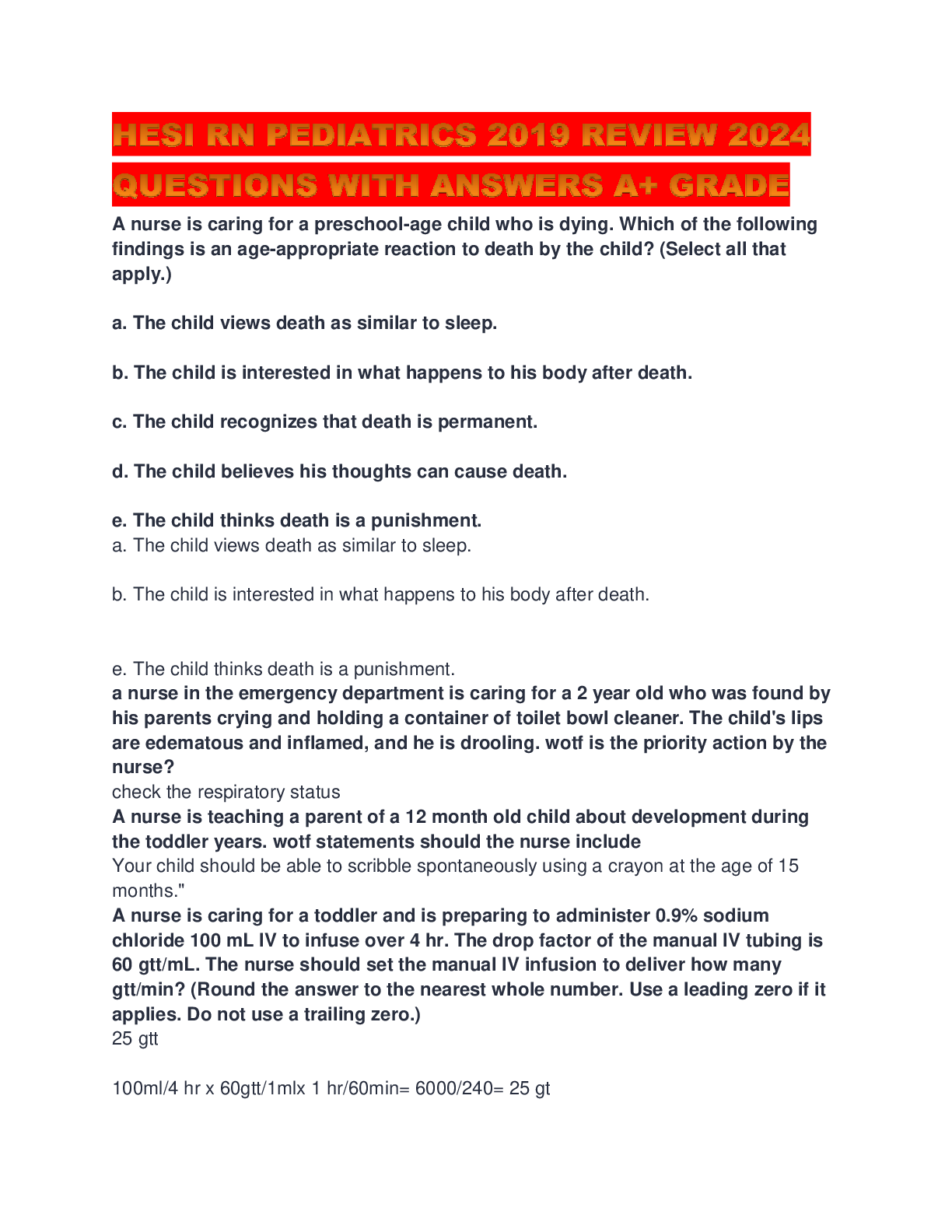
Instant download
Reviews( 0 )
Document information
Connected school, study & course
About the document
Uploaded On
Apr 04, 2024
Number of pages
31
Written in
Additional information
This document has been written for:
Uploaded
Apr 04, 2024
Downloads
0
Views
14

